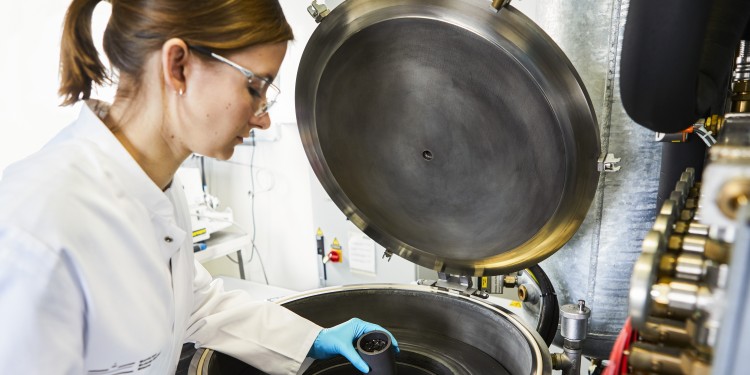
Anode Materials for Lithium-Ion Batteries Based on Sustainable Raw Materials
Developing tailor-made carbons for high-energy anodes in both lithium-ion batteries (LIB) and next-generation battery systems is the aim of the new research project “CarbForBatt” initiated by MEET Battery Research Center of the University of Münster. Since synthetic graphites will continue to play a key role as anode materials in batteries alongside natural graphites, ecological and socio-economic challenges in their supply chain must be overcome. Within the research and development project “CarbForBatt”, sustainable synthesis routes for graphites from industrial waste are therefore being developed. The German Federal Ministry of Education and Research is funding the project (funding code 03XP0443), which runs from February 2022 to January 2024, with 1.48 million euros.
Establish Competitive and Sustainable Supply Chain
“Natural and synthetic graphites have to be imported primarily from non-EU countries. This is accompanied by environmental pollution during mining of natural graphite and very high energy consumption during production of synthetic graphites,” says Dr Tobias Placke, project manager and head of the research division “Materials” at MEET Battery Research Center. “With the project ‘CarbForBatt’, we are pursuing the goal of developing and establishing a sustainable, intra-European supply chain for synthetic graphites.” Precursor materials for synthetic graphites, which consist mostly of industrial waste and by-products, are first being identified. These carbon precursors will then be graphitised at temperatures between 2,700 and 3,000 degrees. The funding provides the acquisition of an inductively heated graphitisation furnace for this purpose.
High-Performance Lithium-Ion Batteries and Next-Generation Battery Systems
To ensure that the materials have exactly the particle morphology and surface properties required for high-performance batteries, they are adjusted by various processes. Examples include particle sifting, rounding processes and surface modifications using a Taylor flow reactor. Optimised mixing processes for graphite with silicon, which increases the energy density of lithium-ion batteries, enable the production of graphite-silicon composites as high-energy anode materials in addition to synthesised graphites.
These approaches constitute the foundation of producing tailor-made graphites that can be used both in lithium-ion batteries currently dominating the market and in next-generation battery systems. Prof. Dr Martin Winter, Scientific Director of MEET Battery Research Center, explains: “Starting with the material, we are thus improving the electrochemical performance of lithium-ion batteries while at the same time focusing on sustainable materials and processes.”
